Named as “The Best All-Time Work of American Architecture”, Fallingwater by Frank Lloyd Wright is hailed internationally as a masterpiece of 20th-century architecture. Frank Lloyd Wright designed Fallingwater for Pittsburgh’s Kaufmann Department Store owner Edgar J. Kaufmann, his wife Liliane, and their son Edgar jr. Fallingwater is located in the mountains of Southwestern Pennsylvania, in Mill Run, about 70 miles east of Pittsburgh.
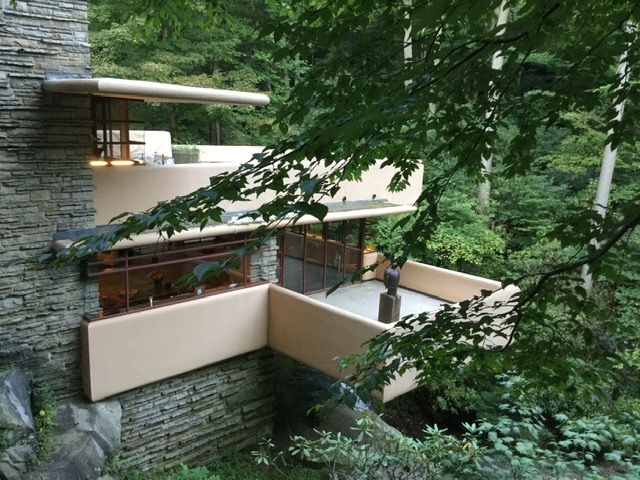
The House Over the Waterfall
Fallingwater is one of Wright’s most widely acclaimed works that was designed in 1935 and completed in 1939. Furthermore, it best exemplifies his philosophy of organic architecture: the harmonious union of art and nature. Wright designed Fallingwater to rise above a waterfall. In 1964, Fallingwater opened to the public as a museum and welcomed its first visitors. Since then, more than five million visitors have toured and experienced Fallingwater. At last, Fallingwater is a National Historic Landmark. Travel+Leisure Magazine stated that Fallingwater is “one of the 12 landmarks that will change the way you see the world.”
Frank Lloyd Wright
One of the greatest universally recognized American architects is Frank Lloyd Wright. Indeed, he believed that beautiful surroundings and objects enrich and improve lives. Wright was born in Wisconsin just after the civil war; he died shortly before the launch of Sputnik in 1959, on the eve of the space age. These years represented a period of unprecedented change, with new technologies, materials, and methods changing our work, homes, and lives. Wright embraced these changes during a career spanning 70+ years. He became a driving force in the design of modern buildings responsive to the changing social environment.
Even as Wright embraced the new, he remained grounded in the principles of organic architecture. He crafted this phrase to explain how all of our human work connects back to nature. Whether it be through inspirations in form, the celebration of materials, or a strong physical connection to the landscape. Wright pioneered principles of sustainability before the word sustainability became commonplace. He created an eco-system that connected buildings to the environment around them, and in turn to our lives. One of his greatest works, which also embodies this idea in the fullest, is Fallingwater.
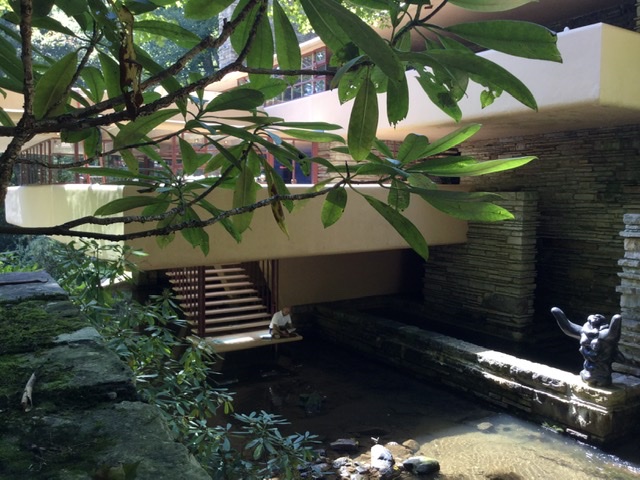
Embracing the Natural Word
The beauty surrounding Fallingwater is intimately connected to understanding the house itself. The genius of Frank Lloyd Wright is in his ability to physically and spiritually embrace the natural world. We can observe in the daring and innovative architecture set among the forest landscape of Bear Run.
For centuries, the impact of water upon land has yielded a landscape of breathtaking beauty in the rural glens of Southwestern Pennsylvania. The literal ground on which it stands—the, rock, water, and flora of Bear Run—is what so profoundly inspired Frank Lloyd Wright’s design.
There is a breathtaking variety of plant life and forests surrounding Fallingwater. This is no doubt as stunning to present-day visitors as it was to the Kaufmanns when they began vacationing in this spot. In addition to diverse plant life, the region’s climate and topography give rise to types of forests that are characteristic of the region.
The Partnership between Edgar Kauffman and Frank Lloyd Wright
The partnership between Edgar Kaufmann and Frank Lloyd Wright was a fruitful one. It was founded upon mutual respect and a shared affinity for new ideas and challenges. Introduced to Wright by his son, Edgar Jr., who had studied with Wright at Taliesin, Kaufmann was intrigued by the image of the aging architectural genius who, at age 67, was thought to be in the twilight of his career. After receiving the commission for Edgar Kaufmann’s corner office interior of Kaufmann’s Department Store, Frank Lloyd Wright visited Pittsburgh, and ultimately Bear Run, in December 1934. This engagement also led to the commission of Fallingwater.
The Kaufmanns’ love for Bear Run’s rushing waterfalls inspired the architect. He imagined a residence placed—not as the Kaufmanns were expecting—across from the falls. Thus, they could be enjoyed from afar or cantilever directly over them. It was a daring move that permitted the Kaufmanns to not only simply view nature but actually live in its midst.
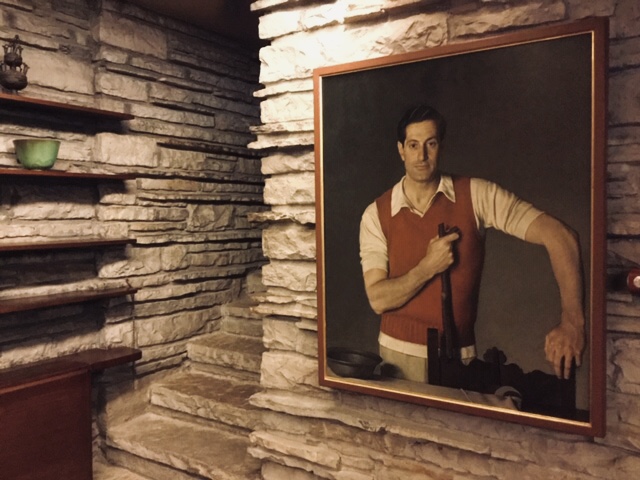
Dramatic Setting of the Fallingwater by Frank Lloyd Wright
Frank Lloyd Wright chose the most dramatic of these falls when siting the Kaufmanns’ house. Wright exhibited the best of his art, tempered by experience and stimulated by the opportunity to unite man with nature—one of his core beliefs. His clients’ openness to new ideas and their promotion of modern design through Kaufmann’s Department Store challenged Wright. Moreover, this particular architect-client relationship produced a design unrivaled by contemporary American architects at the time.
Even before its construction was complete, Fallingwater captured the world’s imagination. Its fame would become undeniable in 1937. Frank Lloyd Wright appeared on the cover of Time, posed in front of his drawing of Fallingwater. The Museum of Modern Art (MoMA) in New York City dedicated a two-year traveling exhibition, A New House by Frank Lloyd Wright (1938), to its unique design. It soon graced the pages of Life as well as Architectural Forum. making it one of the most recognizable houses in the world. A second MoMA exhibition, Frank Lloyd Wright, Architect, opened following the completion of Fallingwater’s guest house in 1939.
Organic Architecture
The epitome of “organic architecture,” Fallingwater’s design symbolizes the harmony between people and nature. Through thoughtful design that is seamlessly integrated with its natural setting, the building, its furnishings, and the surroundings become cohesive parts of one unified, interrelated composition. Wright described that this was “Where the whole is [to] the part as the part is to the whole and where the nature of the materials, the nature of the purpose, the nature of the entire performance” are all equally important to the resulting building.
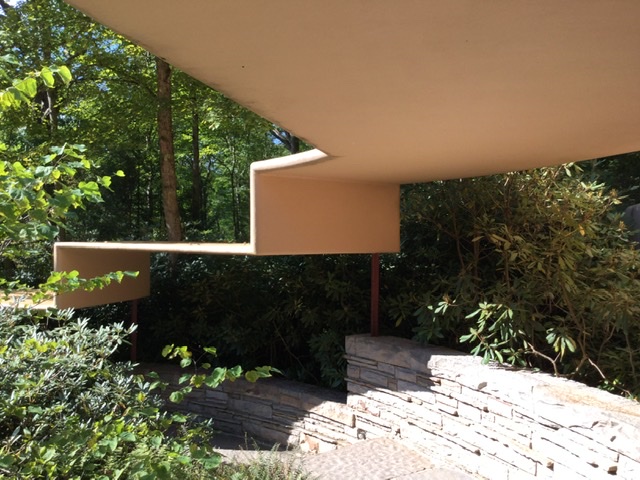
Construction of Fallingwater ended by the fall of 1937. Thus, the Kaufmann family began using their weekend retreat to share the home and explore its surroundings with friends. The retreats included long hikes through the woods, refreshing plunges under the falls, and reading or dining al fresco. For over a decade, Fallingwater acted in this capacity. Simply enjoying a private residence viewable by invitation only. In 1952, shortly after the death of Liliane Kaufmann, Edgar Kaufmann and his son discussed the future of Fallingwater. They agreed the house and the land surrounding it should eventually become accessible to the public. Then, Fallingwater opened for public tours in 1964 and saw 29,792 visitors its first season. Currently, the annual visitation exceeds 180,000. In fact, 5.7 million people tour the Kaufmann’s weekend retreat, a house designed for a family of three.
National Historic Landmark
In 1976, Fallingwater became a National Historic Landmark. Then, in the same year Frank Lloyd Wright’s home and studio in Oak Park, Illinois, and Taliesin, his home and school in Spring Green, Wisconsin joined the list. Furthermore, in 2000 the Pennsylvania Historic and Museum Commission named it a Commonwealth Treasure. By 2015, nine Frank Lloyd Wright buildings across the United States joined in a bid for World Heritage List inscription by the United Nations Educational, Scientific, and Cultural Organization (UNESCO). Finally, in 2019 Fallingwater received UNESCO status.
Indeed, Fallingwater is one of the most unique houses in the world. It needed people just as unique to help make this timeless treasure a reality. Since Frank Lloyd Wright Fallingwater opened to the public in 1964, more than five million visitors have experienced this architectural masterwork. 55 years after its debut, Fallingwater is making its first steps towards establishing itself as an iconic brand as well.
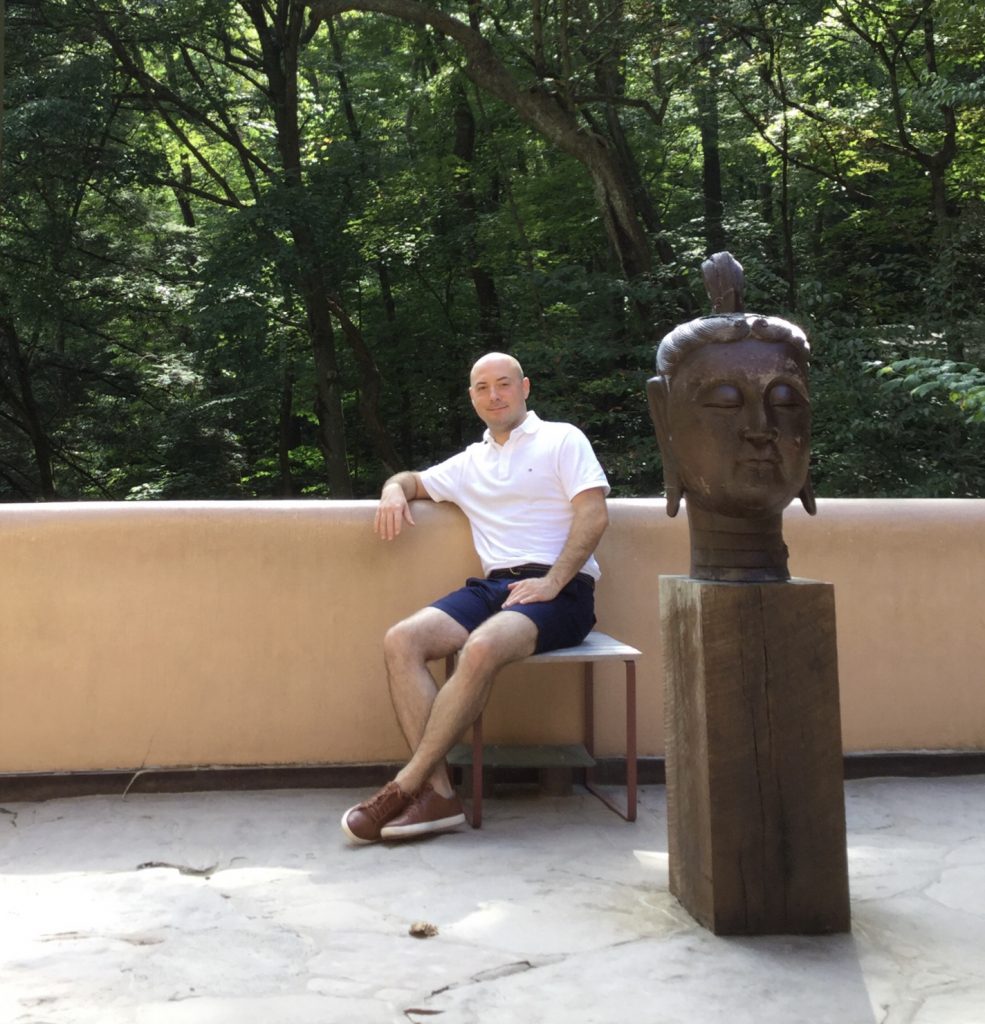
Dr. Gjoko Muratovski prepared this article. At the moment, he is a Scholar-in-Residence at the Fallingwater Institute.
A Word from the Founder, Zest & Curiosity
I have always admired the work of Frank Lloyd Wright. With utmost joy, we had Dr. Gjoko Muratovski, as Zest & Curiosity’s esteemed contributor. Thank you Gjoko for sharing your insights and marvelous photography for this inspiring article.
Enjoy in exploring the iconic Fallingwater, dear reader!

– Tijana
Editor-in-Chief and Creative Director
Zest & Curiosity
